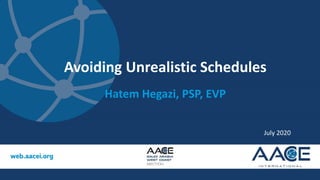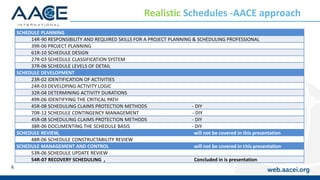Hatem Hegazi discusses avoiding unrealistic schedules and provides tips for developing realistic schedules that follow best practices. Some key points:
- Unrealistic schedules can be caused by rush pressures, lack of planning, or underestimating the work. Realistic schedules require proper planning, team buy-in, and accounting for changes.
- The AACE recommends following their practices for schedule planning, development, review, management and control to develop realistic schedules. This includes defining activities, logic, durations, and contingencies.
- Realistic schedules also require defining responsibilities, developing the work breakdown structure, and outlining the schedule with appropriate level of detail and constraints.





































